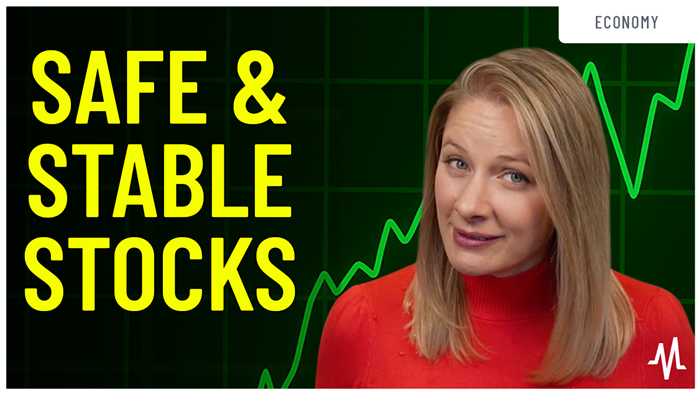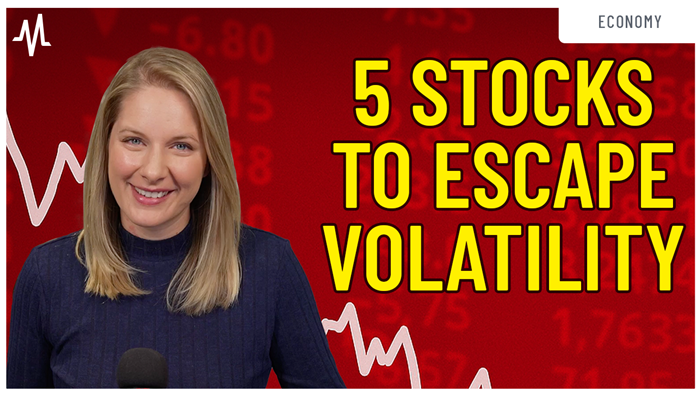As investors search for safe havens in volatile markets, bear market funds are gaining popularity as a diversified asset class designed to withstand exceptionally volatile markets. While bear market funds can be appealing during periods of economic downturn due to their potential to produce returns against market movements, these funds can also be exceptionally volatile and risky.
Read on to learn more about bear market funds, how they are managed and how you can use these funds to complement a more complete overall portfolio.
Key Takeaway
Bear market funds are stock market funds designed to mitigate overall portfolio performance in poorer economic climates. These funds are most often created with the intention of seeing the best performance when the overall market is down by more than 20%.
What is a Bear Market Fund?
In the context of the stock market, a bear market is a financial market in the midst of stress and decline. Though specific definitions of when a bear market arrives can vary by definition source, most agree that the telltale sign of a bear market is when the overall market declines by at least 20%. Historically, previous bear markets have hit a low point of 34% on average. The opposite of a bear market is a bull market, in which the entire market sees an increase in prices.
While all bear markets end eventually, some investors take preventative steps to mitigate losses during these periods of economic loss. Bear market ETF funds and mutual funds take a proactive approach to bear markets by using active selling strategies likely to increase the fund’s assets if the overall market sees a loss.
Each market fund uses its own strategy to combat losses, with popular strategies including the use of higher-risk assets and activities like options and futures contracts, as well as scalping and short-selling. The best funds for a bear market will vary over time, thanks to the success or failure of the upper management team. Some examples of top bear market funds currently trading on major exchanges include:
- ProShares UltraPro Short QQQ ETF: The ProShares UltraPro Short QQQ ETF NASDAQ: SQQQ is an exchange-traded fund with inclusions that aim to return three times the inverse of the Nasdaq 100 Index. In other words, this fund is designed to return 3% in growth for each 1% decline the Nasdaq 100 sees. Conversely, if the Nasdaq 100 sees an increase in value, the ProShares UltraPro Short QQQ ETF will see losses. In March of 2024, the SQQQ had more than $3 billion in assets under management, making it one of the largest bear market index funds.
- ProShares Short S&P500: The ProShares Short S&P500 NYSE: SH is another of the top index funds for a bear market, It utilizes short-selling strategies to reverse the returns of the S&P 500 index fund. It had a total market capitalization of $1.42 billion and a total of $1.04 billion in assets under management as of March 2024, making it another large-cap ETF option.
- Direxion Daily S&P 500 Bear 3X Shares: The Direxion Daily S&P 500 Bear 3X Shares NYSE: SPXS, as the name suggests, seeks to return triple the reverse of the S&P 500. This powerful leveraged fund can result in significant gains during periods of extended economic downturn but may be a riskier investment due to its leveraged assets. It had a total of about $550 million in assets under management as of March 2024, making it a smaller option than both of the best bear market funds from ProShares.
).push({});
Remove Ads Understanding Bear Market Funds
How exactly do bear market stock funds mitigate periods of economic downturns? These funds accomplish their goals by taking inverse positions on major assets that make up large, total market indexes. Many of the best bear market index funds track the S&P 500 stock market index, which is a list of the 500 most influential companies in the United States.
The strategies that bear market funds use to achieve inverse returns of major indexes vary depending on the fund’s goals. One common strategy is short selling, in which the fund borrows shares of a stock or an ETF from a broker and sells them on the open market at the current price. The fund then waits for the price of the borrowed shares to decline, buys them back at a lower price and returns the shares to the broker, profiting from the price difference. This allows the fund to profit when the underlying index or market declines.
Bear market funds may also use derivatives such as futures contracts, options or swaps to achieve inverse exposure to the market. For example, a fund may purchase options on an index or a stock, giving the fund the right to sell the underlying asset at a predetermined price within a specified period. If the index or stock price falls below the strike price, the put options gain value, offsetting losses in the fund's other holdings. These active management strategies are usually detailed in the fund’s prospectus, which you can review on the holding company’s website.
Some bear market funds are structured as inverse leveraged ETFs, aiming to amplify the inverse index's standard returns. These bear market funds usually aim to produce multiples (such as 2x or 3x) of the inverse daily performance of the index they track. However, it's important to note that leveraged ETFs can be riskier due to the use of leverage, making them unsuitable assets for those with lower risk tolerance.
Types of Bear Market Funds
There are multiple types of stock market funds, and the best mutual funds for a bear market might vary depending on your desired returns and how you aim to hedge the market. The following are three examples of fund classifications you’ll encounter as you explore index funds in bear markets.
ETFs
Exchange-traded funds (ETFs) are investment funds that trade on stock exchanges, providing investors with diversified exposure to various assets like stocks, bonds, commodities and currencies. These funds combine the features of mutual funds and individual stocks, offering flexibility and lower costs compared to traditional mutual funds. ETFs can be bought and sold throughout the trading day at market prices, making them popular among investors seeking efficient and transparent investment vehicles.
Bear market ETFs are popular options for investors, providing instant exposure to some of the best stocks to buy in a bear market without the need to evaluate individual items. Many bear market ETFs are leveraged, meaning that they’re constructed in a way that amplifies the losses and returns of the major index they track. Leveraged bear market ETFs can provide enhanced returns in periods of downturn but can also see sharp losses when the market improves. These assets are particularly risky in the event of a bear market rally, in which investors can see higher than average volatility.
Mutual Funds
Mutual funds are investment vehicles that pool money from multiple investors in a diversified portfolio of stocks and other assets, similar to an ETF. These funds are priced once a day after the market closes and are bought and sold directly through the fund company, while ETFs trade throughout the day like normal stocks. Mutual funds usually offer greater tax efficiency, but provide less flexibility to investors due to their limited purchase routes and available accounts. Examples of major bear market mutual funds include the Rydex Inverse Nasdaq-100 and the Grizzly Short.
Index Funds
Most bear market funds are structured as index funds. Index funds are mutual funds, ETFs or other collections of stocks that aim to replicate the performance of a market index, a benchmark of stocks used to measure a specific segment of the economy. Common stock indexes that an index fund may replicate include the S&P 500 and the Dow Jones Industrial Average. Reviewing the underlying index of each bear market fund you’re considering is an important step in research before investing.
Pros and Cons of Bear Market Funds
Before investing, Understanding the pros and cons of investing in the top bear market ETFs and mutual funds is essential. Anticipate and plan for the following potential for both upsides and downsides when investing in these often volatile assets.
Pros
- Diversification: Bear market funds use unique assets not normally incorporated into ETFs and mutual funds in large portions, such as put options. This helps mitigate the overall effects of bear markets and their multiple stages with assets you might have trouble finding included in other funds.
- Hedging option: Hedging is a market strategy that involves strategically investing in assets that are likely to increase in value if the general market declines. Bear market fund ETFs and mutual funds provide an institutional, traditional hedging option with easier liquidation than alternative assets like real estate and precious metals.
- Liquidity and accessibility: Many bear market fund options are available as ETFs, providing investors with liquidity and ease of access to short or inverse strategies without the complexities of directly short-selling securities. They also provide easier buying and selling opportunities than the best mutual funds in the bear market, which do not trade throughout the day like stocks.
Cons
- Higher volatility: Bear market funds can be highly volatile, especially leveraged funds that aim for amplified inverse returns. This volatility can lead to significant fluctuations in fund value and increased risk for investors.
- Decreases when the market is thriving: Bear market funds use strategies like short selling to reverse the overall market's return or underlying market index. These funds should only be used strategically as a result, making them less viable long-term investments.
- Higher fees and expense ratios: The best index funds for a bear market in terms of performance usually use active buying and selling strategies to mitigate market changes. This usually results in higher expense ratios to compensate fund managers and professionals, which you’ll need to take into account when calculating overall return potential.
Factors to Consider When Choosing Bear Market Funds
Before investing in an index fund in a bear market, be sure to review the following due diligence items.
- Expense ratio: Before investing, review the expense ratio of each ETF or mutual fund and anticipate how these fees will influence returns. Expense ratios above 1% are considered high for these types of actively managed funds.
- Historic performance: Review the fund's historical performance during different market conditions, especially bear markets. Look for consistency in performance and whether the fund has achieved its stated objectives over time, especially when compared to the inverse performance of the market index. While past performance does not guarantee future success, it can help investors select assets poised for long-term growth.
- Fund objective and strategy: Each bear market fund maintains a website and prospectus that details its unique goals and strategy. Review historical performance in light of the fund’s strategy, and select funds with multiple investing strategies to further diversify your holdings.
Strategies for Incorporating Bear Market Funds
Incorporating bear market funds into your portfolio as a novice investor can be challenging since these assets tend to be more volatile. Most investors who use bear market funds to complement their portfolio do so as a hedge against loss. This means that they may invest in a small number of leveraged bear market ETFs to limit losses during periods of negative market trends.
Another popular strategy for investing ahead of a bear market is to invest in government bonds and bond ETFs, which have historically performed well during periods of market downturn. Government bonds are considered relatively safe investments due to their backing by the government's credit, while bond ETFs offer diversification across a range of bonds, reducing individual credit risk. The interest payments from government bonds and bond ETFs can also provide a steady income stream comparable to dividend payments from individual stocks.
If you decide to incorporate bear market funds into your portfolio, be sure to do so only as a small percentage of your overall holdings. We recommend consulting with a financial professional before making significant changes to your portfolio.
Monitoring and Rebalancing Bear Market Positions
Even the best funds in a bear market hinge on a strategy that bets against the market as a whole. The average bear market lasts about 14 months, with the average overall market decrease being about 32%, while the average bull market produces returns of about 165%. If you decide to invest in bear market funds, make sure that these assets make up only a small percentage of your overall portfolio. Monitor and rebalance your portfolio, especially after seeing desired returns or when the market direction improves.
Are Bear Market Funds Worth It?
Most bear market funds use complex financial instruments to hedge against loss, making them easier options than individually accessing short-selling tools as a retail trader. However, it’s important to remember that for most investors, attempting to time the market will not result in higher returns compared to dollar cost averaging. Avoid actively buying and selling assets in your retirement or long-term investment accounts during a bear market.
FAQs
The following are some answers to your final questions about buying index funds in a bear market and the best funds to weather the market downturn.
What is the best fund for the bear market?
The ProShares UltraPro Short QQQ ETF is one of the largest bear market funds, with a total of more than $3 billion in assets under management. However, the best fund for a bear market will vary depending on your objectives and goals as an investor. Bond market ETFs tend to display less volatility during bear markets compared to market index ETFs.
Where should I put my money in a bear market?
In a bear market, keeping your money in your current investments is best, “riding out” the market conditions until they improve. If you do prefer to take a defensive approach to upcoming bear markets, investing more heavily in bonds and more stable sectors like utilities and healthcare can help reduce volatility.
What to invest in during a bear market?
During a bear market, some investors look to more stable assets like government bonds and consumer staple stocks, which tend to see less volatility during bear markets. Investors with higher risk tolerance may use a bear market to search for value investing opportunities by looking for assets undervalued by the market to invest in ahead of the future.
Before you consider ProShares UltraPro Short QQQ, you'll want to hear this.
MarketBeat keeps track of Wall Street's top-rated and best performing research analysts and the stocks they recommend to their clients on a daily basis. MarketBeat has identified the five stocks that top analysts are quietly whispering to their clients to buy now before the broader market catches on... and ProShares UltraPro Short QQQ wasn't on the list.
While ProShares UltraPro Short QQQ currently has a Hold rating among analysts, top-rated analysts believe these five stocks are better buys.










